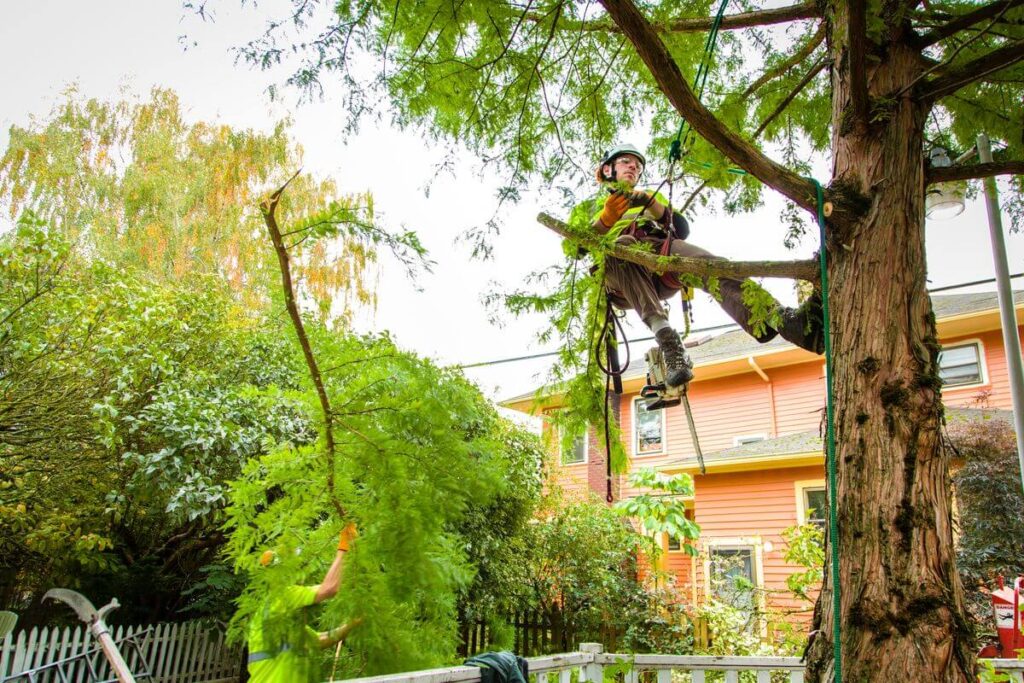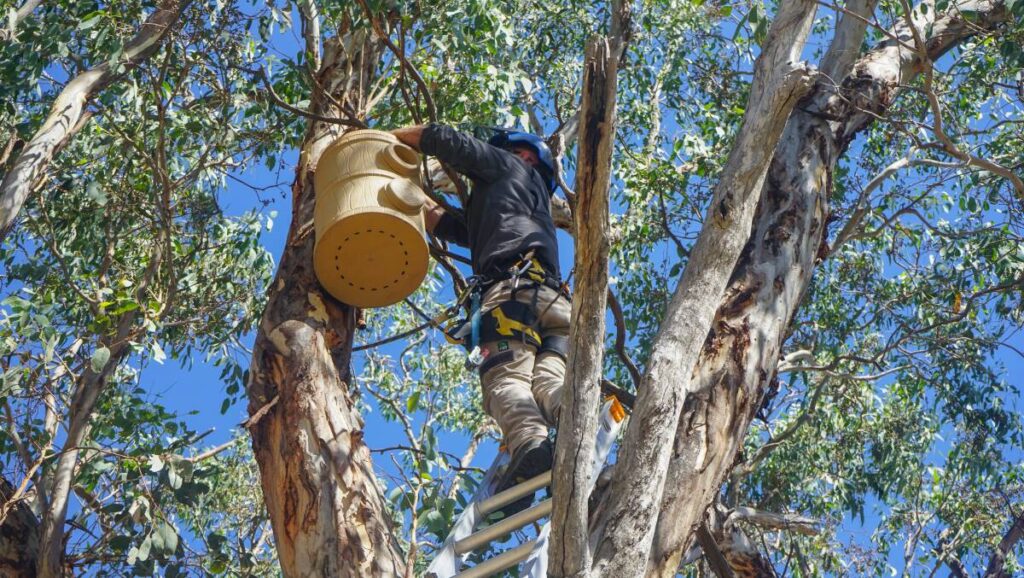Tree pruning is an essential task for maintaining the health and appearance of your trees. However, many homeowners are often overwhelmed by the cost associated with this service. In this article, we will explore the basics of tree pruning and discuss the factors that influence the cost. Additionally, we will provide you with tips on how to estimate the cost of tree pruning and budget for this important task. Whether you decide to hire a professional tree pruning service or take on the job yourself, understanding the cost and budgeting accordingly will ensure that your trees remain healthy and beautiful for years to come.
Factors Influencing Tree Pruning Cost
Size of the Tree
The size of the tree is one of the primary factors that determine the tree pruning cost. Larger trees generally require more time, effort, and specialized equipment to prune properly. Additionally, the height of the tree may affect accessibility and increase the complexity of the task, which can impact the overall cost.
Furthermore, the diameter of the tree plays a crucial role in determining the pruning cost. Thicker branches and trunks are more challenging to trim and require heavier-duty equipment, which can add to the overall expenses. Tree pruning professionals often assess the circumference of the tree to provide an accurate estimate of the cost involved in the pruning process.
Tree Species and Health
The type of tree and its overall health condition can also influence the cost of pruning. Some species have unique growth patterns or require specific pruning techniques, which may require additional expertise or equipment. In the case of diseased or damaged trees, the cost may be higher due to the need for careful pruning and potential disposal of infected branches.
Moreover, the age of the tree can impact the pruning cost. Older trees may have decaying branches or structural weaknesses that require extra attention during the pruning process. Tree service providers often conduct a thorough inspection of the tree’s health and structural integrity before determining the cost of pruning, taking into account any potential risks or complications that may arise.
Location and Accessibility
The location of the tree and its accessibility can affect the pruning cost. Trees located in hard-to-reach areas or with limited access for equipment may require additional time and effort, which can increase the overall cost. Factors such as the proximity to buildings, power lines, or other structures can also impact the complexity of the job and thus affect the pricing.
In addition, environmental factors such as terrain unevenness or presence of obstacles around the tree can influence the pruning cost. Tree care professionals may need to use specialized equipment or take extra safety precautions to navigate challenging landscapes, leading to adjustments in the overall pricing. Assessing the surrounding environment is crucial in determining the most efficient and cost-effective approach to pruning the tree while ensuring the safety of both the workers and the property.

The Basics of Tree Pruning
What is Tree Pruning?
Tree pruning is the process of selectively removing specific branches or limbs from a tree. It is typically done to improve the overall health and structure of the tree, enhance its aesthetic appeal, or prevent potential hazards. Pruning can also promote better airflow and sunlight penetration, which are essential for the tree’s growth.
When pruning a tree, it is crucial to consider the tree’s species, age, and overall health. Different trees require different pruning techniques, and improper pruning can lead to long-term damage. For example, some trees may benefit from crown thinning to increase light penetration, while others may need crown reduction to maintain a balanced structure.
Why is Tree Pruning Necessary?
There are several reasons why tree pruning is necessary. First and foremost, pruning helps remove dead, diseased, or damaged branches, preventing them from falling and causing harm or property damage. Additionally, pruning can shape the tree’s growth, maintain its size and form, and encourage the development of strong limbs. Pruning also plays a vital role in reducing the risk of pest infestations and diseases.
Regular tree pruning can also improve fruit production in fruit-bearing trees by redirecting energy to fruit-bearing branches. It can help young trees establish a strong branch structure early on, reducing the need for corrective pruning as the tree matures. Proper pruning techniques can also prevent the spread of diseases within a tree and promote overall tree longevity.
Estimating Tree Pruning Cost
Average Cost of Tree Pruning Services
The cost of professional tree pruning services can vary depending on various factors, including the size of the tree, its species, and the location. On average, the cost can range from $200 to $1,000 per tree. However, it is essential to consult with local tree service providers to obtain accurate estimates based on your specific needs.
When determining the cost of tree pruning, it’s important to consider the complexity of the job. Trees that require extensive pruning due to overgrowth or disease may incur additional charges. Some tree service companies also factor in the accessibility of the tree. Trees located in hard-to-reach areas may require specialized equipment, impacting the overall cost of the pruning service.
DIY Tree Pruning: Pros and Cons
While hiring a professional tree pruning service ensures expertise and safety, some homeowners may consider pruning their trees themselves to save money. DIY tree pruning can be a viable option for small trees or simple pruning tasks. However, it is important to weigh the pros and cons before taking on the job. Improper pruning techniques can harm the tree and even pose risks to your safety. If you decide to prune your trees yourself, educate yourself on proper techniques and safety precautions to minimize the potential risks.
Before embarking on a DIY tree pruning project, assess your comfort level with using tools such as pruning shears, loppers, and saws. Understanding the anatomy of trees and how they respond to pruning is crucial for achieving desirable results. Additionally, consider the time commitment required for tree pruning. While smaller trees may be manageable for a DIY enthusiast, larger trees may pose significant challenges that are best handled by experienced professionals.

Budgeting for Tree Pruning
Planning Your Tree Pruning Budget
When planning your tree pruning budget, it is important to consider the specific needs of your trees. Take into account their size, species, and overall health condition. Different tree species may require varying levels of care and expertise during the pruning process. For example, hardwood trees like oak or maple may need more intricate pruning techniques compared to softwood trees like pine or spruce. Understanding these nuances can help you make informed decisions when budgeting for tree pruning services.
Obtain multiple quotes from reputable tree pruning services in your area to compare prices and services. It’s essential to not only look at the cost but also the reputation and experience of the tree pruning companies. Reading reviews and asking for references can give you insight into the quality of work they provide. Remember to allocate a buffer in your budget to accommodate any unforeseen circumstances or additional requirements that may arise during the pruning process, ensuring that you are prepared for any unexpected costs that may arise.
Saving Money on Tree Pruning
There are several ways to save money on tree pruning without compromising the quality of the work. First, consider bundling multiple trees or services together, as some tree pruning companies offer discounts for larger projects. By combining the pruning of several trees or opting for additional services like tree removal or stump grinding, you may be able to negotiate a better rate for the overall project.
Additionally, timing your pruning during the off-peak season can sometimes result in lower costs. Tree pruning companies may be less busy during certain times of the year, leading them to offer discounts to attract more customers. Planning your tree pruning during these periods can help you save money while still receiving professional tree care services. Lastly, ask the tree pruning service if they offer any payment plans or financing options to help spread out the cost. Some companies may provide flexible payment options that allow you to manage your budget more effectively while ensuring your trees receive the care they need.
Hiring a Tree Pruning Service
What to Look for in a Tree Pruning Service
When hiring a tree pruning service, it is important to do your research and choose a reputable and experienced company. Look for certifications and licenses, as well as positive reviews and testimonials from previous customers. Inquire about their insurance coverage to ensure you are protected in case of any accidents or damages during the pruning process.
Furthermore, it is beneficial to consider the specific expertise of the tree pruning service. Some companies may specialize in certain types of trees or have experience with unique pruning techniques. Understanding their areas of specialization can help ensure that your trees receive the best possible care tailored to their individual needs.
Questions to Ask Before Hiring
Before hiring a tree pruning service, ask important questions to ensure that they understand your specific needs and can provide the services you require. Inquire about their experience, the techniques they use, and if they have any references or examples of their previous work. Ask for a detailed cost breakdown and inquire about any guarantees or warranties they offer for their services.
Moreover, it is advisable to inquire about the environmental practices of the tree pruning service. Understanding how they dispose of trimmings and whether they use eco-friendly products can help you make an environmentally conscious choice for your tree care needs. Additionally, discussing their approach to tree health and sustainability can give you insight into their long-term commitment to preserving the beauty and longevity of your trees.
In conclusion, understanding the cost of tree pruning and budgeting accordingly is essential for maintaining the health and beauty of your trees. Whether you decide to hire a professional tree pruning service or take on the task yourself, consider the factors influencing the cost, estimate the expenses, and plan your budget accordingly. With careful planning and consideration, you can ensure that your trees receive the necessary care while staying within your budget.
See Also: Choosing the Best Tree Pruning Service for Your Property

